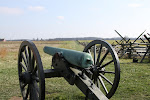World War II turned collegiate athletics upside down as young men swapped athletic uniforms for military ones, joining the service to fight in North Africa, Europe and the Pacific.
Louisiana Tech was not immune. Student athletes who would have been playing college football instead were serving their country, forcing Bulldog football to be discontinued during the 1943 season. Professors were joining the cause as well while coeds were signing up with the Red Cross, the WACs—Women’s Army Corps—and the Navy WAVES—Women Accepted for Volunteer Emergency Service.
 |
| V-12 sailors and Marines and other students leaving chapel, Louisiana Tech, 1944 |
Legendary Bulldog head coach Joe Aillet even changed roles in 1943 as the University put football on the backburner as the flames of war spread across the globe. Aillet did his















